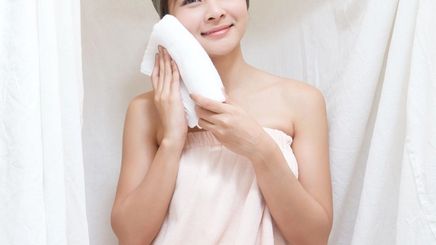
Getting a face steam is a luxury that we don’t often get these days. It falls under advanced dermatology skin care. A standard step for in-office facial treatments, a face steam usually follows a thorough cleansing of the face. It’s meant to soften the skin and open the pores, preparing it for extraction, exfoliation, or masks. However, doing this crucial skincare step at home is a different story.
Machines provide a controlled release of steam at spas and skin clinics. An expert checks if your skin condition can withstand steaming (people with eczema or are not advised to do it). A specialized routine to address your skin’s needs usually follows the steaming process. At home, you can dry out your skin easily if you steam too long or too often.
If you’re planning to add facial steaming to your skincare routine, make sure to follow the following tips to get the most out of it while protecting your skin.
Wash Your Face
Cleansing is an essential step before a face steam. Remove all traces of makeup and dirt with a cleansing balm or micellar water. Follow up with a Any residue can enter and clog your pores when the steam opens them up. After cleansing, pat your skin dry. Use a headband to pull your hair back or wear it in a ponytail.
Use Distilled Water
This might sound fancy-schmancy, but distilled water is the only kind of water to use with your steamer. Tap water has minerals, heavy metals, and salts that you could steam onto your face. These can also build up in your device and cause corrosion. If you want to prolong the shelf life of your steamer, use distilled water.
Follow Up with Skin Care
Thou shall not face steam just for the stake of face steaming. This process is part of a routine and must be followed by proper skin care. Post-steam is the best time to treat your skin with a light acid peel to get rid of dead skin cells. Your skin would also be receptive to serum after a good steam. A serum like POND'S Bright Miracle Serum Burst Cream would help brighten and hydrate your skin.
Monitor Your Skin
Finally, check your skin before, during, and after a face steam treatment. Face steaming is not a one-size-fits-all activity. It deals with hot steam, which is more dangerous to the skin than hot water. If hot water dries out the skin, imagine what kind of damage steam can do (you guessed it — burns).
Make sure your skin isn’t dry or inflamed before you steam. Monitor your skin during the process for any redness or discomfort. If you see these signs, stop immediately. After steaming, give your skin time to rest and recover.
Face steaming isn’t just relaxing, it can also clear your pores and make your skin more receptive to skin care. However, it can also be harmful to the skin when done incorrectly. Make the most of an at-home face steam by being safe and following the steps above.